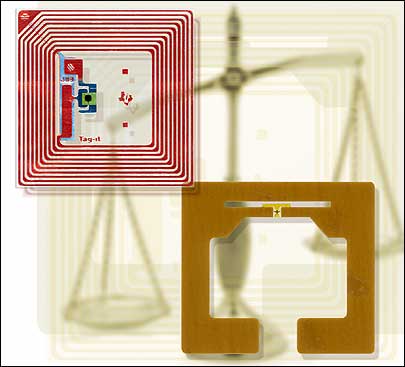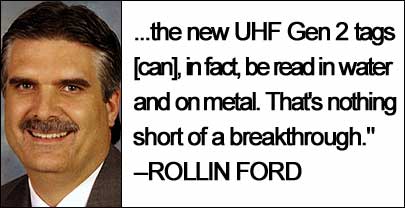Jun 01, 2006In an April 13 press release, Wal-Mart announced that Rollin Ford, the company's new executive vice president and CIO, was committed to the company's RFID efforts. The press release also announced a specific date, June 30, after which Wal-Mart will no longer accept pallets and cases with Electronic Product Code Generation 1 tags.
Buried in the press release was this quote from Ford: "Many thought UHF tags could not be read around water or metal and that only HF tags could meet these tests. However, our team and our technology partners proved that the new UHF Gen 2 tags could, in fact, be read in water and on metal. That's nothing short of a breakthrough."

It was the second time Wal-Mart signaled its opposition to the use of high-frequency RFID tags on individual items, because it's already using ultrahigh-frequency for pallets and cases. In an RFID Journal webinar, Richard Ulrich, solutions architect on Wal-Mart's RFID strategy team, said that using a single frequency for items, cases and pallets lowers the total cost of RFID interrogators.
Using all UHF interrogators has two primary benefits. A company can negotiate a lower price if it purchases 5,000 UHF interrogators, rather than 2,500 UHF and 2,500 HF interrogators. And maintenance is less costly if you need to purchase and train people to install or repair parts on only one type of interrogator.
Companies that sell UHF tags and interrogators claim that HF tags will never be manufactured as inexpensively as UHF tags. But proponents of HF tags say they've been proved to work well for tracking unique items, and they are more effective around water, which absorbs UHF signals, and metal, which reflects them.
Ford's quote refers to UHF tags that do work well around water and metal. Companies such as Impinj have been developing UHF tags that can communicate with interrogators the same way HF tags do.
UHF proponents still must prove UHF will work effectively at the item level, and the relative business and price benefits of HF versus UHF will be debated in the months ahead. But there is reason to believe that Wal-Mart's influence could tip the scales in favor of UHF. The company has already played an important role in the evolution of EPC technology.
The Auto-ID Center developed a Class 1 EPC standard, but a startup called Matrics, which was later purchased by Symbol Technologies, convinced Wal-Mart executives that it had superior technology. Wal-Mart and others, in turn, convinced the leaders of the Auto-ID Center to make Matrics' technology, even though it was not interoperable with Class 1 EPC, a Class 0 standard. (Matrics' tags had to be programmed at the factory and therefore were a step below the field-programmable Class 1 tags.)
Wal-Mart also played a role in uniting vendors and end users behind the Gen 2 standard. Only a handful of companies have a stake in Gen 1 technology, and those players—Symbol Technologies and Alien Technology—have moved into the Gen 2 market. So there is no company with a strong financial stake in keeping Gen 1 alive.
But major companies have a stake in the HF market. Hardware vendors, including Philips Semiconductors and Texas Instruments, have mature HF technology they would like to see used. And some end-user companies want to use HF on items. Pfizer, for instance, is using HF tags on bottles of Viagra and is pleased with that choice.
In early May, EPCglobal announced the formation of a working group to develop an EPC standard for HF, creating two options for end users. It's possible the battle between HF and UHF at the item level could be more divisive than the battle between ISO and EPC standards. Stay tuned.

